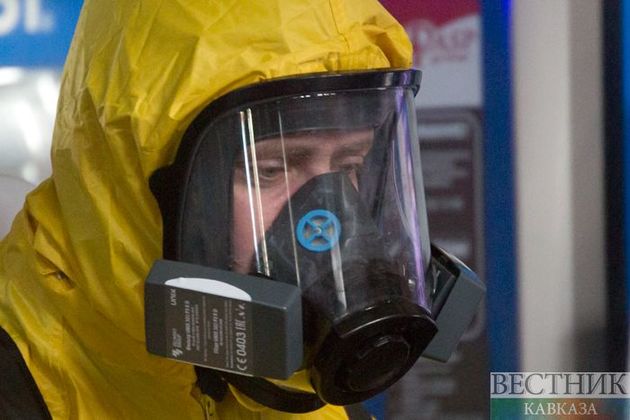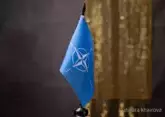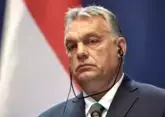The media dedicate increasing attention to the issue of vaccine distribution and how it affects post-pandemic recovery. Some commentators and outlets have been focusing especially on the inequalities in the allocations of doses amongst different countries. As a matter of fact, a small number of highly developed countries have already booked an excessive number of doses. The UK, Israel and the US are likely to get enough shots to immunise their entire populaces more than once.
Meanwhile, as Modern Diplomacy writes, most of the developing world is lagging behind. Lacking the financial resources and the political might to extoll bounding commitments from vaccine producers, they are losing the race. This is especially the case in Africa and Latin America, but Europe’s periphery is not in a much better position. However, few countries some South-Eastern Europe have managed to hit the headlines all around the globe for their amazing performances. One of them is Hungary, probably the most riotous EU member State. The other is Serbia, whose relations with the EU, Russia and China are equivocal at best.
The EU’s vaccine diplomacy has failed
South-Eastern Europe is a rather variegated area. It comprises 14 countries, half of which are members of the EU: Bulgaria, Cyprus, Croatia, Greece, Hungary, Romania, and Slovenia. The other two, Albania and the Republic of North Macedonia, are on the cusp of entering the Union. Whereas the remaining five have little to no concrete membership prospect: Bosnia, the territory of Kosovo, Moldova, Montenegro, and Serbia. In an effort to prove itself indispensable, the EU has committed to sending out the vaccine to some non-members. Through Sofia, it promised Skopje to deliver thousands of AstraZeneca shots, and Bucharest shipped several Pfizer batches to Chisinau. Whereas the Commission itself pledged even more doses of vaccines for both Sarajevo and Pristina. According to these plans, the EU should be ahead of its neighbours in rolling out the vaccine across the board. At the same time, friendly relations should allow a few non-members to reap the benefits and boost their performances. However, reality tells a rather different story.
Looking at the data on total vaccinations in the 14 South-Eastern European countries one can identify four groups. Having vaccinated more than 30% of their populations, Hungary and Serbia are the undisputed leaders. Following, a quite compact group comprising the other six EU member States posits between 15% and 25%. Despite their different sizes and approaches, Bulgaria, Cyprus, Croatia, Greece, Romania, and Slovenia have reaped sensible benefits from EU membership. Still, they are far behind the two leaders. Third, between 5% and 10%, there are only Albania(10.57%) and Montenegro (7.85%). Two quite diverse countries, both seem to have enjoyed some help from the EU — but not nearly enough. Finally, way below the 5%-threshold stand Bosnia, Kosovo, North Macedonia and MoldovaThese countries were relying almost entirely on the EU’s help to acquire enough shots, but Brussels let them down.
These data make up for a rather self-evident indictment of the EU’s vaccine diplomacy. The EU missed on the occasion to project influence in its neighbourhood while reinforcing its image as a “civilian power”.But, often diplomacy in this part of Europe is a zero-sum game where political sway is the ultimate prize. For every metaphorical centimetre, an external actor loses, another foreign power seems to take hold. The EU’s missed chance has become Russia’s great opportunity to score a few points in what once was an area of strategic importance. Yet, taking a better look, one realises that this time around the focus should not be on third parties. In an increasingly multipolar, and even multiplex world, middle-sized states are experimenting with new ways to matter.
Hungary
Hungary has recently registered a substantial surge in the number of contagions and in a hospital for treatments. The government has also taken extremely strict measures to curb the spread of the various in early March. But the strongest endeavour to stop the various came on the vaccination side of the equation. As a matter of fact, Hungary has approved more vaccines and administered more shots than any other European country. Having jabbed already over 2,000,000 doses, Hungary is driving the European vaccine race — by far. The latest data from the European Centre for Disease Control (ECDC), Pfizer produced about half of these vaccines. Of the remaining million, about 430,000 vials brought AstraZeneca’s or Moderna’s labels. This means that other sources accounted for about 570,000 doses or over 25% of the total.
Hungary has taken a few risky bets in its paths toward group immunity. First, it ordered and injected about a quarter of a million of Russia’s Sputnik V in early February 2021. At the time, there were still many doubts about Sputnik V’s viability, efficacy and security. This came already in defiance of the EU’s pressures for a centralised approval of new products. More recently, Hungary went on with the purchase and speedy approval of several Chinese vaccines. Apparently, Budapest has been paying $36 per shot to Beijing — double the price of a Sputnik V dose. Yet, for high the price may have been the bet seems to be paying back. So much, that Hungary has actually acquired newfound output-legitimacy for its unpredictable foreign policies.
Serbia
At the beginning of the pandemic, Serbia was already better-positioned to benefit from Russia’s and China’s proactive vaccine diplomacies. Belgrade carries no legal responsibility vis-à-vis Brussels since it is not an EU member State. Moreover, it is less dependent on Germany and other EU countries when it comes to debt financing and trade (Figure 3). True, backtracking on the promise of future membership would have been a strong weapon in the EU’s arsenal. But this is not the case anymore. Serbia has no concrete path towards entering the EU and a long history of flirtations with Russia and China. Some have argued that Serbia outpaced the EU thanks to China’s and Russia’s vaccines. Yet, the data are not clear and the process not transparent enough. If anything, it seems that the proportions of ‘Western’ and ‘Eastern’ vaccines should not be too different from Hungary’s.
Still, one thing is certain. Serbia has turned its extraordinary capability to buy vaccines from both the ‘West’ and the ‘East’ into a diplomatic stunt. In fact, the EU has miserably failed to provide Belgrade’s neighbours with shots. Meanwhile, Serbia has opened its borders to foreigners willing to get a jab. Moreover, Belgrade has made up for Sofia’s failure to send more vaccines to Skopje — putting the EU in a hard spot.
Hands free
South-Eastern Europe’s vaccine diplomacy, the EU’ failure and regional powers’ successes speak volume about how the world is changing. As the US seem to inexorably withdraw from its past commitments, the EU is failing to come of age. Meanwhile, Russia is reasserting itself and has been punching above its weight in Europe and beyond for a while now. Finally, its recovery from the pandemic-induced crisis signals that China has no intention to stop short of overtaking the US. Against this fluid background, South-Eastern Europe is gaining renewed centrality. Hungary and Serbia are just two examples of what this implies — albeit the most successful ones. Nevertheless, their prowess it becoming an example for other small countries to follow. Thus, it is opportune to keep following the events closely as new geopolitical alignments seem to emerge.










